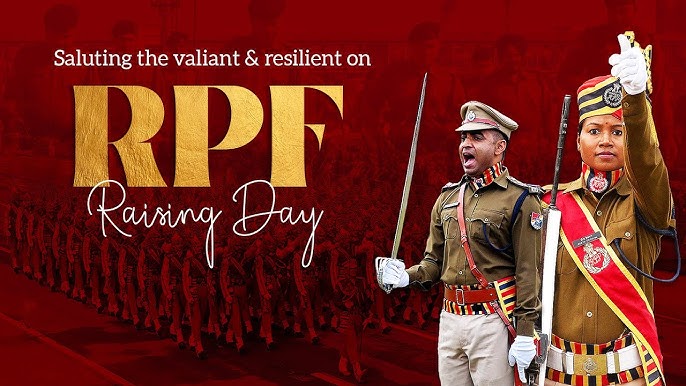Railway Police Force (RPF) Foundation Day
Railway Police Force (RPF) Foundation Day is celebrated on 20 September every year in India. In the year 1985, Railway Police Force (RPF) was included in the Central Armed Forces. On 29 August 1957, the Railway Protection Force Act was enacted by the Parliament, in which the name of the security force was changed to Railway Protection Force. RPF rules were made on 10 September 1959, while RPF regulations were prepared in 1966. In 1965, it was named “Railway Protection Special Force” (RPSF). In 1966, RPF has been given legal rights for better protection of railway property by making Railway Property Act.
The first railway on the Indian Subcontinent ran over a stretch of 21 miles from Bombay to Thane. The idea of a railway to connect Bombay with Thane ; and Kalyan with the Thal and Bhore Ghats inclines, first occurred to Mr. George Clark, the Chief Engineer of the Bombay Government, during a visit to Bhandup in 1843. The formal inauguration ceremony was performed on the 16th of April, 1853, when fourteen railway carriages carrying about 400 guests and passengers left Bori Bunder at 3.30 pm “amidst the loud applause of a vast multitude and to the salute of 21 guns.” The first passenger train steamed out of Howrah station destined for Hooghly, a distance of 24 miles, on the 15th of August, 1854. Thus, the first section of the East Indian Railway was opened to public traffic, inaugurating the beginning of railway transport on the Eastern side of the Subcontinent. In the South, the first line was opened on the 1st of July, 1856 by the Madras Railway Company. It ran between Vyasarpadi Jeeva Nilayam (Veyasarpandy) and Walajah Road (Acrot), a distance of 63 miles. In the North, a length of 119 miles of line was laid from Allahabad to Kanpur on 3rd March, 1859. The first section from Hathras Road to Mathura Cantonment was opened to traffic on 19th October, 1875. These were the small beginnings, which in due course developed into a network of railway lines all over the country. By the 1880s, the Indian Railway system had a route mileage of about 9000 miles i.e. 14500 km. Thereafter, there was no looking back. Now, the Indian Railways is the premier transport organization of the country and the largest rail network in Asia, and the World’s second largest under one management.
The efforts towards the control of crime on the Railways are almost as old as the history of the Railways itself. The Railway Police replaced a part of the Watch and Ward set-up of the Private Railway Companies in 1881, following the enactment of the Police Act in 1861. However, in the mid-forties, the portion of the Watch and Ward staff which remained under the control of these Railways, was found inadequate to control thefts of their assets and consignments. A Committee under the then Director, Intelligence Bureau, set up in 1954, recommended the reorganization of the Watch and Ward into a statutory body.
Railway Protection Force is one of the best security forces of India. It is a security force which is responsible for the safety of rail passengers in the country, protection of the assets of Indian Railways and to monitor the use of railway facilities for any anti-national activities. It is a central armed security force, also known as Para Military Force, it is often known as RPF. This security force is under the Ministry of Railways, India.
To qualify as a RPF Constable the candidates should possess 10th/Matric from a recognized Board of Education. Candidates will be required to meet the Physical Standards specified by the RPF as well as qualify the Physical Efficiency Test to be considered eligible for the post of RPF Constable.
Article written by and Editorial credit: State Bureau Chief Himanshu Nauriyal.
